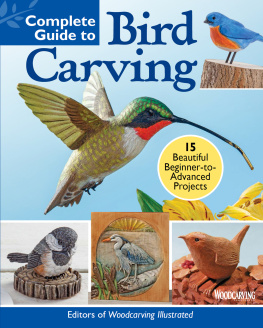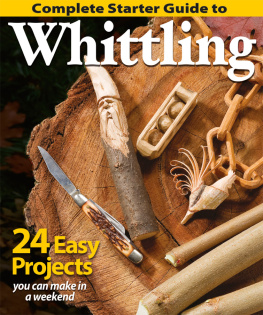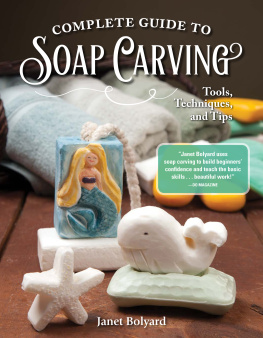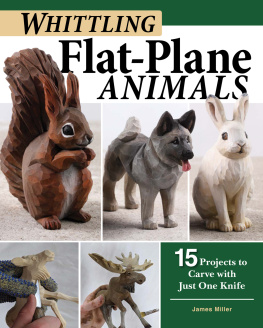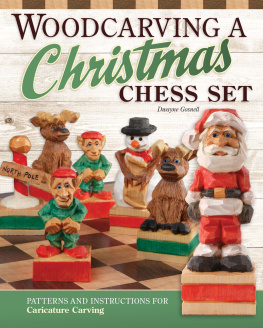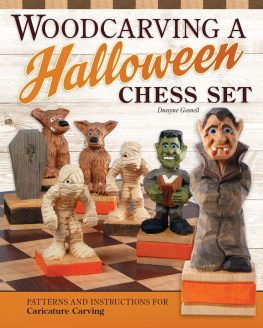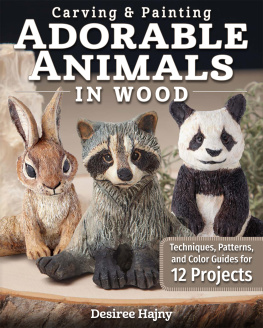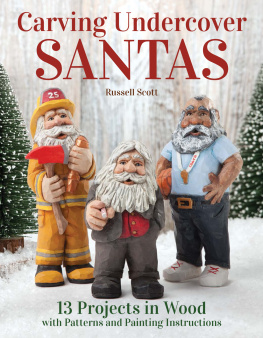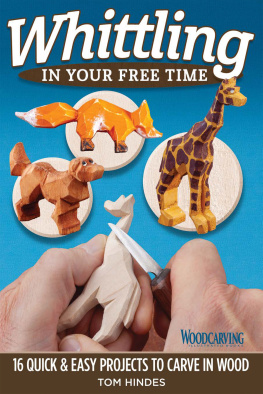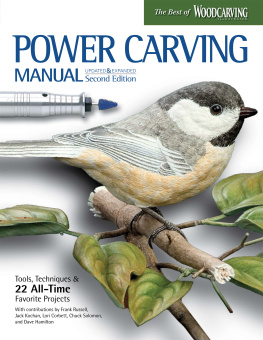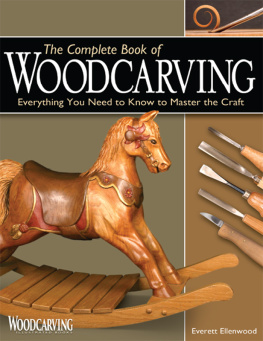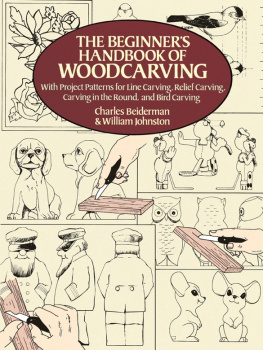Contents
Guide

2022 by Fox Chapel Publishing Company, Inc., 903 Square Street, Mount Joy, PA 17552.
Complete Guide to Bird Carving is an original work, first published in 2022 by Fox Chapel Publishing Company, Inc. All projects were previously published in Woodcarving Illustrated. The patterns contained herein are copyrighted by the author. Readers may make copies of these patterns for personal use. The patterns themselves, however, are not to be duplicated for resale or distribution under any circumstances. Any such copying is a violation of copyright law.
Print ISBN 978-1-4971-0277-4
eISBN 978-1-6374-1083-7
Library of Congress Control Number: 2021946988
To learn more about the other great books from Fox Chapel Publishing, or to find a retailer near you, call toll-free 800-457-9112 or visit us at www.FoxChapelPublishing.com.
We are always looking for talented authors. To submit an idea, please send a brief inquiry to .
For a printable PDF of the patterns used in this book, please contact Fox Chapel Publishing at , with 9781497102774 Complete Guide to Bird Carving in the subject line.

Foreword
Welcome to the wonderful world of bird carving! The craft is as unique and diverse as there are birds in the sky. To show you how accessible and rewarding the craft can be, we searched the archives of Woodcarving Illustrated to offer this collection of step-by-step tutorials for bird carvers of every interest and skill level. Whether youre into stylized songbirds, wrens in the round, or realistic warblers, this book has something for you.
The projects in this book are divided into three sections based on difficulty level. The first section includes beginner-friendly projects with simplified features and minimal tools. The second section offers a slew of designs ideal for the intermediate carver, with slightly more challenging details. The third section includes projects perfect for advanced carvers who have mastered the basics and want to take their skills even further.
Each project is presented with instructions and a full materials and tools list to guide you through the crafting process. Weve also included the basics on safety, tools, and accessorieseverything youll need to start making woodchips. Corresponding patterns for each project are provided in the back of the book.
Whether youre just getting started or have been carving for years, the following pages offer resources and projects that youll want to turn to again and again.
Happy carving!
Editors of Woodcarving Illustrated magazine

Table of Contents
Like the Projects in this Book?
Then youll loveWoodcarving Illustratedmagazine!
Woodcarving Illustrated is a quarterly magazine produced by Fox Chapel Publishing. Each issue is packed with all the latest and greatest projects, user-friendly patterns, tool reviews, tips, and features for carvers at all skill levels. Whether youre a fan of caricature, relief, chip carving, spoon carving, whittling, power carving, or flat-plane carvingor just want to expand your woodworking repertoireweve got something for your specific interests. Visit foxchapelpublishing.com/magazines to subscribe.
Then, once youve tried your hand at some of our out-of-this-world projects, join the community! Were on Instagram and TikTok @woodcarvingilllustrated, and on Facebook at Woodcarving Illustrated Magazine. Also, be sure to check out our message board at forum.woodcarvingillustrated.com or sign up for our regular newsletter at woodcarvingillustrated.com/enews.
Once youve made one (or a dozen) of the projects in these pages, write to us directly! Send an email to to share photos and information about your creations. We love hearing from you!

Getting Started
Materials & Tools
Each project in this book includes a full list of materials and tools you will need. Among the specific materials and tools needed for each project, common items include a saw for preparing blanks, assorted grits of sandpaper, cyanoacrylate (CA) glue, clamps, and a drill press and bits.
Other Useful Items
Acrylic paints, stains, and dyes: For adding color.
Chisels, gouges, and V-tools: To add texture after the initial roughing out is complete.
Epoxy putty: For creating lifelike eyes.
Carving knife: For roughing out and/or detailing a handcarved project. Alternately, you could use a traditional bench knife to rough out a project and add texture and detail with a rotary tool.
Paper towels: For wiping off excess glue or finish. Be sure to properly dispose of oil-soaked towels and rags, as they can spontaneously combust (See Minimize Fire Hazards ).
Paintbrushes: For applying acrylic paints, stains, dyes, and/or finishes.
Rotary tool: For shaping and adding texture.
Toothpicks: To add fine details, such as eyes and decorative dots.
Woodburner: For adding details and creating lifelike feathers before paint is applied.

Sanding Through the Grits
The grit number on a length of sandpaper refers to the average number of particles per square inch. The lower numbers, such as 60 and 80, are the coarser grits, which remove the most wood and are used for rough shaping. The higher numbers220 and aboverefer to finer grits that remove less wood and are used for smoothing. Sanding through the grits simply means using progressively finer sandpapers to smooth the scratches left by coarser grits. Rub sandpaper on a project until the wood is smooth and shaped the way you want, and then move on to a finer grit of paper and repeat, sanding with the grain when possible.
Basic Bird Anatomy
For those inclined to skip this segment, avoid the temptation. Understanding how a bird is put together will help your bird carving skills progress. In this section, we will touch on some important points of anatomy; however, we encourage you to do a deeper study on your own.
The external anatomy of a bird is known as topography, as it is a sort of map of feather groups and anatomical features. Ornithologists, those who study birds, have developed a common nomenclature that names these features. Color changes often demarcate these feather groups and features, particularly on the head. Youll notice that many of the projects in this book stick to common descriptions, but it is important to know anatomical features as a bird carver.
Birds come in many shapes and sizes, but the basic feather groups shown below are present on nearly all flying birds. The obvious differences are the shape, size, and color of the feathers within those groups specific to any particular species.

